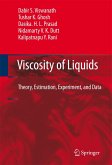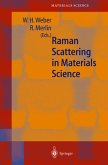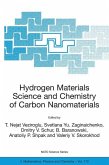Time-Resolved Spectroscopy in Complex Liquids introduces current state-of-the-art techniques in the study of complex dynamical problems in liquid phases. With a unique focus on the experimental aspects applied to complex liquids, this volume provides an excellent overview into the quickly emerging field of soft-matter science. Researchers and engineers will find a comprehensive review of current non-linear spectroscopic and optical Kerr effect techniques, in addition to an in-depth look into relaxation dynamics in complex liquids. This volume offers current experimental findings in transient grating spectroscopy and their application to viscoelastic phenomena in glass-formers, dynamics of confined liquid-crystals, and a time-resolved analysis of the host-quest interactions of dye molecules in liquid-crystal matter.
Time-Resolved Spectroscopy in Complex Liquids provides a cohesive introduction suitable for individuals involved in this emerging field, complete with the latest experimental procedures of complex liquids.
The investigation of liquid properties is as old as the human desire to observe natural phenomena. The paramount relevance of such state of matter is - vious, spanning from the basic theoretical model of random systems to the more advanced technical applications. Nevertheless the interpretation and - derstanding of liquid properties remains a challenge in materials science. In the liquid state, the potential and kinetic energies are characterized by similarvalues,differentlyfromthegasorsolid/crystalphases.Thisfundamental physical property prevents a description of the liquid structure independently fromitsdynamics.Theintermolecularforcesandmolecularmotionsarestrictly interconnected, producing the peculiar features of liquid phases. In particular when the intermolecular potential is characterized by speci?c features,asanisotropicand/orlong-rangeinteractions,theliquidstateshows- cal dynamic aggregation and structuring phenomena. This is the distinguishing characteristic of complex liquids. Typical examples are the hydrogen-bonded liquids, glass formers, polymers and liquid crystals. Also relatively simple molecular liquids, e.g., CS and benzene, clearly show complex dynamics, 2 evidence of local structuring effects. During the last years, researchers have undertaken a steady effort to improve the knowledge of liquid matter, both from experimental and theoretical points of view. New spectroscopic techniques, based on nonlinear optical phenomena, have been realized and applied to the study of simple molecular liquids. On the other hand, standard experiments have been applied to liquids characterized by particularly complex dynamic processes.
Time-Resolved Spectroscopy in Complex Liquids provides a cohesive introduction suitable for individuals involved in this emerging field, complete with the latest experimental procedures of complex liquids.
The investigation of liquid properties is as old as the human desire to observe natural phenomena. The paramount relevance of such state of matter is - vious, spanning from the basic theoretical model of random systems to the more advanced technical applications. Nevertheless the interpretation and - derstanding of liquid properties remains a challenge in materials science. In the liquid state, the potential and kinetic energies are characterized by similarvalues,differentlyfromthegasorsolid/crystalphases.Thisfundamental physical property prevents a description of the liquid structure independently fromitsdynamics.Theintermolecularforcesandmolecularmotionsarestrictly interconnected, producing the peculiar features of liquid phases. In particular when the intermolecular potential is characterized by speci?c features,asanisotropicand/orlong-rangeinteractions,theliquidstateshows- cal dynamic aggregation and structuring phenomena. This is the distinguishing characteristic of complex liquids. Typical examples are the hydrogen-bonded liquids, glass formers, polymers and liquid crystals. Also relatively simple molecular liquids, e.g., CS and benzene, clearly show complex dynamics, 2 evidence of local structuring effects. During the last years, researchers have undertaken a steady effort to improve the knowledge of liquid matter, both from experimental and theoretical points of view. New spectroscopic techniques, based on nonlinear optical phenomena, have been realized and applied to the study of simple molecular liquids. On the other hand, standard experiments have been applied to liquids characterized by particularly complex dynamic processes.








